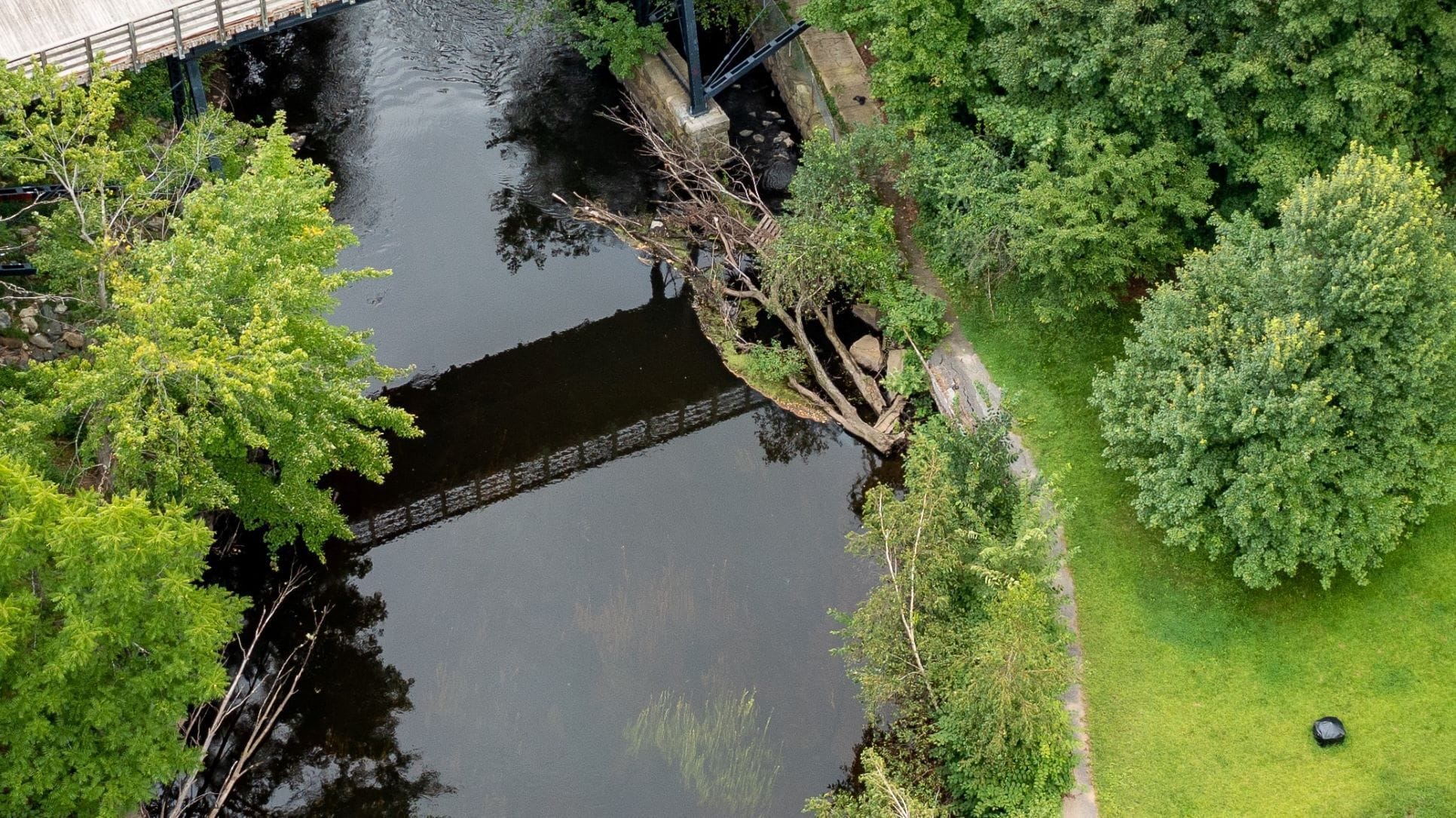
HUDSON — The Conservation Commission hosted an information session on Oct. 25 about the proposed Wetlands Protection Bylaw. At the meeting, Conservation Agent Pam Helinek outlined the details and objectives of Article 8 on the November Special Town Meeting.
Helinek said one of the main responsibilities of the Conservation Commission is to “protect wetlands or water bodies by enforcement of the state law,” which is known as the Massachusetts Wetlands Protection Act. This act affects permitting new projects near wetlands or correcting violations, or unpermitted alterations to areas adjacent to wetlands.
She explained that wetlands are “natural sponges” that absorb flood water so it does not impact people’s yards or basements. However, as development increases, so does stormwater runoff.
“Wetlands are becoming increasingly important,” said Helinek.
Helinek said the wetlands also provide habitats for wildlife, and they can create recreational opportunities for people. In order to protect the wetlands, the areas around them, which are called buffer zones, are critical and must be maintained. Any change in vegetation can alter the light and temperature of the wetland itself.
“If you damage the buffer zone, the wetlands can change or shrink or even disappear,” she said.
Helinek said while the Wetlands Protection Act protects the resource at the state level and establishes a 100-foot buffer zone, there is “very limited protection in the buffer zone.”
She added there are small water bodies that are not protected under the act, and the law itself gives towns a limited ability to enforce protections. Some communities in the eastern part of the state have local bylaws to protect their resources, according to Helinek.
According to Helinek, the Assabet River is classified as impaired, while Fort Meadow Reservoir and Lake Boone have problems with algae and invasive plant growth.
“Some of our most important resources in Hudson are already threatened by overdevelopment,” she said.
Wetlands Protection Bylaw
The goal of the Conservation Commission to pass a bylaw is to address the fact more development is happening in Hudson that may encroach on wetland areas.
With the Wetlands Protection Bylaw, the Conservation Commission could provide better protection with more enforcement tools, Helinek said. A 25-foot no-disturb zone would be established for isolated wetlands and vernal pools, and the cumulative impacts on the areas would be considered when project permits occur.
Helinek added the Conservation Commission could fine any violators of the Wetlands Protection Bylaw’s conditions. There is a no-disturb zone currently, she noted, but it is just a policy that cannot always be enforced.
Recreational use is protected in the no-disturb zone as docks and retaining walls are exempt from the 25-foot no-disturb zone and can be permitted as they are now. New native vegetation can be planted as well, she said.
What would not be permitted is adding new pavement or structures that are not water-related or clearing existing natural vegetation in the zone, according to Helinek.
“The bylaw will not impact existing conditions or structures. It will not allow the Conservation Commission to make a larger no-disturb zone in its regulations,” she said.
Helinek also discussed the limitations, as the commission would not be able to add local filing fees or have an agent trespass on private property. It could also not prevent new development, but it could “ensure that new development is done in an environmentally-friendly way.”
Resident Tom Green asked about the enforcement component of the bylaw. Under the fining structure, a first violation incurs a $100 fine, the second violation incurs a $200 fine and the third and subsequent violations incur a $300 fine. He asked about the timeline, and whether the fines would continue from the first violation being discovered.
He asked, “If I attempt to address it, are you going to continue to fine?”
Helinek said that would not be the case. It would only be considered a new violation for every day it was not addressed by the owner. She noted that if someone received a notification and did not respond by the stated deadline, then fines would accrue.
Conservation Commission Chair James Martin said the commission members want to see if there is a plan to mitigate the issue to comply with the commission.
“We’re going to work with people,” Martin said.
Helinek said they do not want to fine people and do not benefit from any fines. She called them a tool to address violations.
She added, “This will allow us to have some teeth. That’s all.”
For more information on the Wetlands Protection Bylaw proposed in Article 8, go to https://tinyurl.com/5c4tynmy. In addition, there is information posted on the Conservation Commission’s page about the bylaw, and a video of Helinek’s presentation is available at https://vimeo.com/872556347.
Town Meeting will be held Nov. 20 at the Hudson High School at 7:30 p.m.












